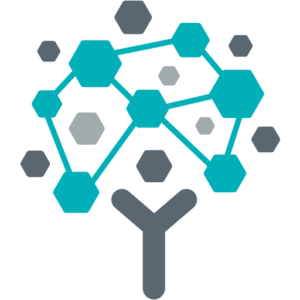Reading Time: 5 minutes
Don’t look now but we’ve already passed the midway point of the year, and it’s time to start preparing for year-end fundraising efforts.
Donors tend to donate generously to nonprofits between Thanksgiving and New Year’s, making it a fundraiser’s high season. Whether it’s a mix of feeling particularly thankful, and charitable, this time of year, or they’re looking to spend allotted charitable dollars to make up for lost time or to prepare for tax filing, your organization must be poised and ready if you want your nonprofit’s voice to be heard above the proverbial clanking bells of the season.
This means you need to start your end-of-year (EOY) campaign planning and prepping well in advance. So, where to start? The fundraising experts at GiveSmart put together this quick reference checklist to help guide your nonprofit’s planning, month-by-month to the year’s end:

- Review last year’s EOY campaign(s)
- Pull reports with data that include dollars raised, number of donors, number of donations, number of new donors, number of repeat donors, and average gift size to drive your goal-setting for the upcoming fiscal year and campaigns.
- Establish your goals
- Develop your key personas
- Donor personas are central to successful fundraising because they can help you understand who your donors are, what they expect and value, and what ties them to your mission. Once you’ve developed your personas, you can segment your database and target appeals that are meaningful and relevant.
- Brainstorm campaign concepts
- Conduct a website audit
- Have your marketing team audit your website incorporating feedback from volunteers, board members, family members, and others.
- Ask your auditors/testers to:
- Donation forms
- Your email list
- Your about you section
- Other actions relevant to your site or campaign
- Test your technology
- Get your creative concepts reviewed and approved
- Begin collecting stories
- You’ll want to tell compelling stories during your fundraising campaign(s) about individuals your organization has served. Stories can inspire your supporters, help communicate exactly where donations are going, and show passion for your cause. Identify those in your community you could spotlight in these stories.
- Build out an editorial calendar
- Recruit board members to help with EOY efforts

- Clean up donor data
- Build a donor journey based on personas
- Each donor’s experience should feel personal, depending on his/her/their persona. For example, the giving process for a major donor to a zoo who has a passion for red-eyed tree frogs should look and feel different than the process for your $50 donor who likes polar bears.
- Create web content
- Create campaign-specific donation forms
- You’ll want to continue the campaign theme all the way through the giving process, including your forms. This keeps the conversation going in the donor’s head, which is a much better scenario than sending them to a generic donation form right after reading an amazing, relevant story.
- Write emails and direct appeals
- Seek asset/appeal approval
- Review appeals and donation forms with accounting
- Write EOY thank you letters
- Make sure your thank you messages match your personas and continue your stories. After all, it was your meaningful, relevant stories that piqued donors’ interests to begin with, so keep it going through the thank you and even the follow-up next year.
- Identify corporate partners/sponsors
- Make sure #GivingTuesday is part of your plan
- #GivingTuesday is a no-brainer. In 2022, more than 37 million adults participated in many ways. Giving in the U.S. alone totaled $3.1 billion, a 15% increase compared to 2021. You should absolutely take advantage of the widespread (and growing) awareness and observance of this special day.

- Final campaign approvals
- It’s almost go-time, so campaign approvals should be signed, sealed, and delivered!
- Finalize all communication assets
- Send your warm-up communication
- Conduct a telephone thank-a-thon
- Test, test, test
- Get your staff and volunteers involved in campaign testing. Use as many variables as you can.
- Send your first EOY appeal
- Send pre-#GivingTuesday email notices
- #GivingTuesday is always the Tuesday after Thanksgiving, so consider sending out a note the week before and the week of Thanksgiving.
- Recruit volunteers
- Block time on your Executive Director’s calendar to personally sign thank you notes
- Send #GivingTuesday email solicitation on the Tuesday following Thanksgiving
- #GivingTuesday is a major EOY fundraising campaign for your organization. Use all the tools at your disposal to get your name, mission, and ask on the donor map.
- Post about #GivingTuesday on social media
- Facebook, Twitter, LinkedIn, Instagram, or whatever other social media channels you use should come alive on #GivingTuesday. Be sure to include the #GivingTuesday hashtag and a link to your donation page in posts and your profile description.

- Execute your editorial calendar
- Time for the RUSH! Provide EOY campaign updates, thank donors who have given to your yearend efforts, and interact on social media early and often throughout the month. This is where you separate yourself from the herd and really focus on your donors and their impact. If you’ve followed this monthly plan so far, December won’t be the fire drill that it’s felt like in years past.
- Takeover your website homepage
- Post social media thank yous and updates
- This should be, at best, a daily task (or at least, weekly) throughout the entire month of December.
- Continue making thank you phone calls
- Get your last direct mail solicitation to UPS by Dec. 15
- December 15 is a good target for a direct mail drop deadline. Based on your audience and the distance your appeals have to travel (within the state versus internationally, for example) you may consider a shift in either direction.
- Review your initial campaign emails and adapt
- Schedule an email solicitation for the holiday week
- Set an out-of-office message
- Instead of the same-old, same-old, “I’m out, blank, returning, blank,” message, ask all employees to reinforce your EOY campaign in their out-of-office messages. You might even consider providing them with a script to cut and paste.
- Send your final “last chance” email solicitation on Dec. 30
- Start building a new donor welcome series
- In the heat of the EOY moment, you may feel like securing any hard-fought, year-end dollars is your ultimate goal. But really, this is just the beginning. Each donation should be viewed as the start (or continuation) of a wonderful, long-lasting, meaningful relationship. And, since it’s much easier to get a supporter to donate a second or even third time, it’s critical that you start building a solid connection immediately.
GiveSmart makes giving easy and offers end-to-end features that best support your donor and fundraising management plans, no matter the time of year.
GiveSmart is the easy-to-use, innovative, and modern online fundraising and donor management platform that elevates any fundraiser. From mobile-friendly silent auctions to dynamic peer-to-peer events and guest management to donor engagement, they’re the solution to turn your mission into something that moves donors.
The combination of GiveSmart with MIP Fund Accounting presents a compelling advantage that seamlessly tracks and manages finances, optimizes fundraising efforts, empowers donor stewardship, and ensures long-term sustainability.
Ready to start your journey? Reach out today for information on MIP and GiveSmart.
Share this post





